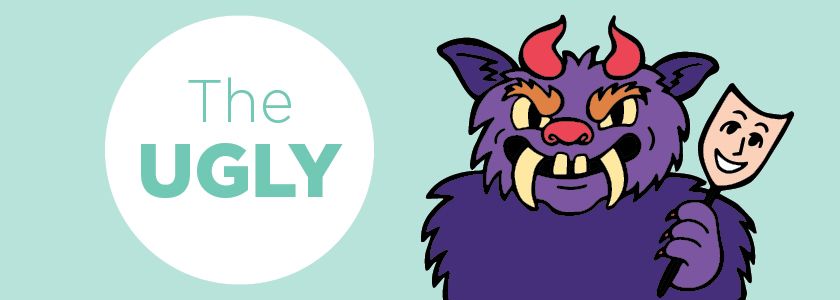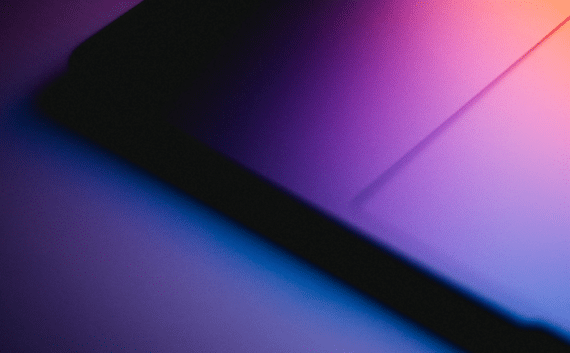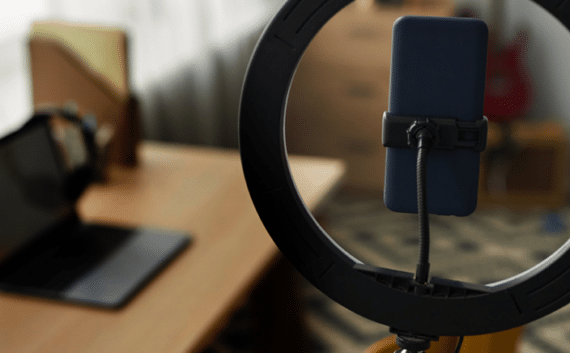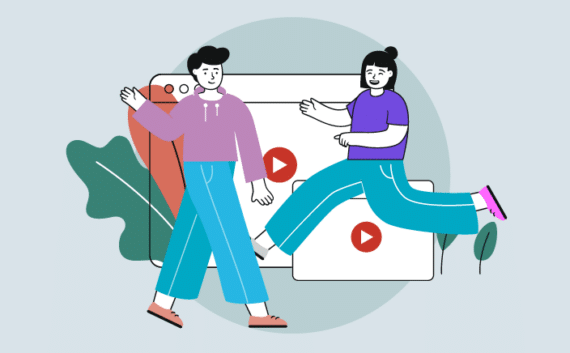
What is Social Influencer Marketing?
Social influencer marketing is the collaboration of brands with influential people, for the promotion of a product, service or campaign. These influential people have established credibility within a specific industry, and have the access and ability to persuade large audiences through their credibility and reach.
The History of Social Influencer Marketing
Influencer marketing is by no means a new strategy; celebrities have endorsed brands since the dawn of time – or at least since 1760, when Robert Wedgwood of Wedgwood China used endorsements from members of the Royal Family to boost pottery sales. Social influencer marketing, however, is relatively new and increasing in popularity. Where celebrities were once used for endorsements, social media influencers have now taken the market share of collaborative work.
Since 2017, global spend on influencer marketing increased from $4.4 billion to $8.2 billion – an increase of roughly 86%. In fact, influencer marketing has become so trendy that the figures are still expected to rise. Global spend on influencer marketing is set to reach an estimated $10 billion by next year with the average ROI standing at $6.50 for every $1 spent.
As profitable as the strategy may be, smaller companies and brand giants alike have approached social influencer marketing with some trepidation. It may offer many benefits to the brands who use it but like anything, it has its pitfalls. To better understand this marketing strategy, we sat down with Renee MacDonald, the Brand Manager for Dr. Oetker Queen Fine Foods, to better understand the good, the bad and the ugly of social influencer marketing.

The Good
Solving the Mistrust of Advertising Problem
Consumer tastes have changed as they’ve become more marketing savvy. Consumers no longer want to be told by brands why they should be using their products or services. Instead, they’re turning to referrals for assistance in making purchasing decisions.
The proof is in the pudding:
- 84% of consumers trust peer recommendations over brand advertising
- 70% of consumers consult social media before making buying decisions
- 74% of people make a purchase after seeing something on Instagram
- 75% of shoppers who read social sharing comments clicked through to the retailer’s website – and of those, 53% made a purchase
Interestingly, consumers consider social influencers as peers, and trust them over their friends as sources of genuine and authoritative opinion.
Solving the Ad-block Problem
Consumers are increasingly selective with their media consumption, and with the advent of ad-blockers, they’re increasingly selective with the advertising they’re exposed to as well. Put simply – more people are becoming wary of traditional advertising efforts, making it harder for brands to connect with them through these channels.
Enter social influencer marketing! Influencers have a direct pipeline to the eyes and ears of consumers. When brands find influencers who fit their brief, then target audiences aren’t likely to tune out. In fact, they’re even more likely to engage with brands, as Queen Fine Foods found out.
“After sustained influencers campaigns over the past 2 – 3 years, now we can’t keep up with the engagements. People tag us constantly, they show photos and videos of themselves using our products – and we’ve really reached that tipping point where they do a lot of the work for us.” –Renee MacDonald, Queen Fine Foods Product Manager
Solving the Awareness & Engagement Problem
Rather than disrupt the user experience, as is sometimes the case with traditional advertising, native advertising operates within organic content. This means that brands that employ social influencers are not only able to directly connect with audiences through this highly targeted approach – but also align themselves with these influencers, benefitting from the consumer-influencer relationship.
More importantly, brands that engage their audiences with social influencers ultimately reward their consumers. According to Renee, when Queen Fine Foods first began incorporating social influencer marketing in their digital marketing strategy,
“It wasn’t so much about building large-scale product awareness or brand awareness, it was actually about engaging and rewarding our loyal bakers on a platform where they loved to share their baking”. – Renee MacDonald, Queen Fine Foods Product Manager
Solving the Expense Problem
Many marketers understand the expense of large-scale campaigns, particularly celebrity endorsements. For example, Beyoncé earned $50 million to promote Pepsi back in 2012. Global mega-brands may be able to afford Beyoncé, but for brands with smaller budgets, such celebrity endorsements are unrealistic.
Though they may still be expensive, macro influencers, social influencers with large followings that are typically greater than 100,000, are still more cost-effective than celebrity endorsements.
Proving more affordable still are micro-influencers, social influencers with a following that is typically around 10,000, but ranging anywhere between 2,000 and 100,000.
What’s become evident over recent years is that the quality of followers now carries more value than quantity. With 83% of consumers stating they are highly likely to follow a recommendation made by a micro-influencer, social influencers who create engaging content with niche audiences can offer brands greater consumer value than celebrity endorsements.

The Bad
Before engaging in social influencer marketing, it’s essential that brands understand the risks that come with it. One of the greatest issues plaguing influencer marketing is influencer fraud.
Influencer fraud occurs when paid influencers use artificially inflated follower numbers to increase their asking rate for engaging their audience on behalf of a brand. Just as reputable influencers are able to help brands – fake influencers can just as easily hurt them or waste precious budget. In fact, fake influencers (or ‘Product Mules’, as they’re also known) not only undermine the entire marketing industry, but the legitimate connections fostered between real influencers and their followers, and brands with their consumers.
“Over the past couple of years we have noticed a few product mules on Instagram. More often than not today, we turn to genuine influencers and micro influencers that we already have pre-existing relationships with. All it takes is a quick message and we pop some new products in the mail for them to try, along with a hand written note. The personal exchange is so much more rewarding for both parties.” – Renee MacDonald, Queen Fine Foods Product Manager
This is the reason brand giants like Unilever, L’Oreal and Diageo have publicly denounced influencers with inauthentic followings. But how are these ‘Product Mules’ doing it?
Social Media Bots
One of the quickest ways illegitimate influencers artificially boost their following is through the purchase of social media bots. Found on social media platforms like Facebook and Instagram, bots imitate the behaviour of followers with the intent of helping influencers who purchase them to gain legitimate followers. These social bots do this by automatically generating messages and advocating ideas.
Social media bots and fake accounts violate the Community Guidelines and Terms of Use for most social platforms, and as a result, are actively sought and removed by them. However, with an estimated 20% of influencers artificially inflating their followings, social bots continue to plague the marketing industry.
“As our team are actively managing our social media channels every day, we became aware of the role bots play in building profiles quite quickly. We’re watching with interest to see how this issue will be managed, and the impact it will have on influencer marketing in the future.” – Renee MacDonald, Queen Fine Foods Product Manager
Instagram Pods
In 2016, Instagram changed its algorithm so that posts on users’ feeds appeared in order of popularity and relevance, rather than chronologically. The change in the structure of Instagram’s app gave rise to a phenomenon called ‘Instagram Gaming’. ‘Gaming the system’ is a method of circumventing the issues that many start-up influencers experience trying to gain visibility in this competitive space. One method for increasing visibility is joining a ‘Pod’.
An Instagram Pod is a direct message between a group of about 15-30 people from a similar industry. Though guidelines may vary from Pod to Pod, the general rule is that when one member posts new content on Instagram they notify the Pod via direct message. Everyone within that group is then required to immediately engage with the post by liking and commenting, thereby placing the post higher in users’ newsfeeds and boosting the visibility of that influencer.
Pods may appear beneficial, especially for newcomers at first, but they artificially improve numbers and aren’t sustainable. Moreover, they create false competition and provide no measure for determining genuine engagement. Unsuspecting brands that fail to do their research will pay for these influencers who have no real credibility and reach. The result is inevitably a failure to engage with the brand’s target audiences, which costs brands both time and money.

The Ugly
It’s clear that social influencer marketing has its pitfalls – but the bad can still turn ugly.
Failure to Identify Product Mules
In a study they conducted using Like-Wise, Social Change Group shared one of the most poignant examples of social influencer marketing gone ugly. In 2018, a beauty and fashion blogger had been found guilty of engaging in fraudulent activity.
The influencer in question, whose identity can’t be revealed due to privacy reasons, boasted over 230,000 followers and 22 partnerships with brands including River Island and Trip Advisor. The influencer was charging $1,000 per post when it was discovered that 96% of her engagement was fake.
Her inclusion in digital marketing strategies by these brands wasn’t just an oversight, it was indicative of a failure to research into the legitimacy of influencers for social media campaigns. No matter the size of your company, no one has the time or budget to misspend on influencers with artificially inflated followings. Scenarios such as these are avoidable if research into influencers is undertaken before partnerships are formed for marketing purposes.
Failure to Choose Appropriate Influencers
Of course, things can still go awry even if a legitimate influencer is selected. Luka Sabbat, an actor from the American sitcom Grown-ish, offers an example of established influencers who simply fail to deliver on their promises.
Sabbat had been offered a deal from Snapchat’s public relations agency Pr Consulting (PRC) to promote Spectacles, with posts on Instagram. According to a complaint filed in the New York Supreme Court, Sabbat was paid $45,000 upfront in an influencer marketing deal worth $60,000, for four unique posts. Sabbat produced one post but never delivered on the other three he had promised. The breach of agreement lead to PRC demanding a return of the $45,000 paid to Sabbat and a further $45,000 in damages.
Sabbat is perhaps a good lesson to brands who fail to perform their due diligence. Due diligence is finding authentic and authoritative influencers aligned with your brand messaging, who can reliably produce engaging content and provide analytics for optimisation.
What You Should Take Away
Social influencer marketing has many benefits – it circumvents some issues facing marketers. Not only that, it offers brands authenticity, credibility and helps them reward loyal consumers. But social influencer marketing has its pitfalls – and to avoid ugly scenarios from arising, it’s important for brands to do the research into influencers before engaging with them.
“My one tip for influencer marketing is to brush up on your knowledge of it, and avoid going blind. While social media and influencer engagement is incredibly fun, colourful and rewarding, making an informed, strategic plan is key for ongoing success.” – Renee MacDonald, Queen Fine Foods Product Manager
If you want to avoid the pitfalls of social influencer marketing, we can help. Whatever your brand needs, we can deliver – because at NOUS, brands are what we make.
If you would like to discuss your social influencer marketing strategy, please get in touch at [email protected].





